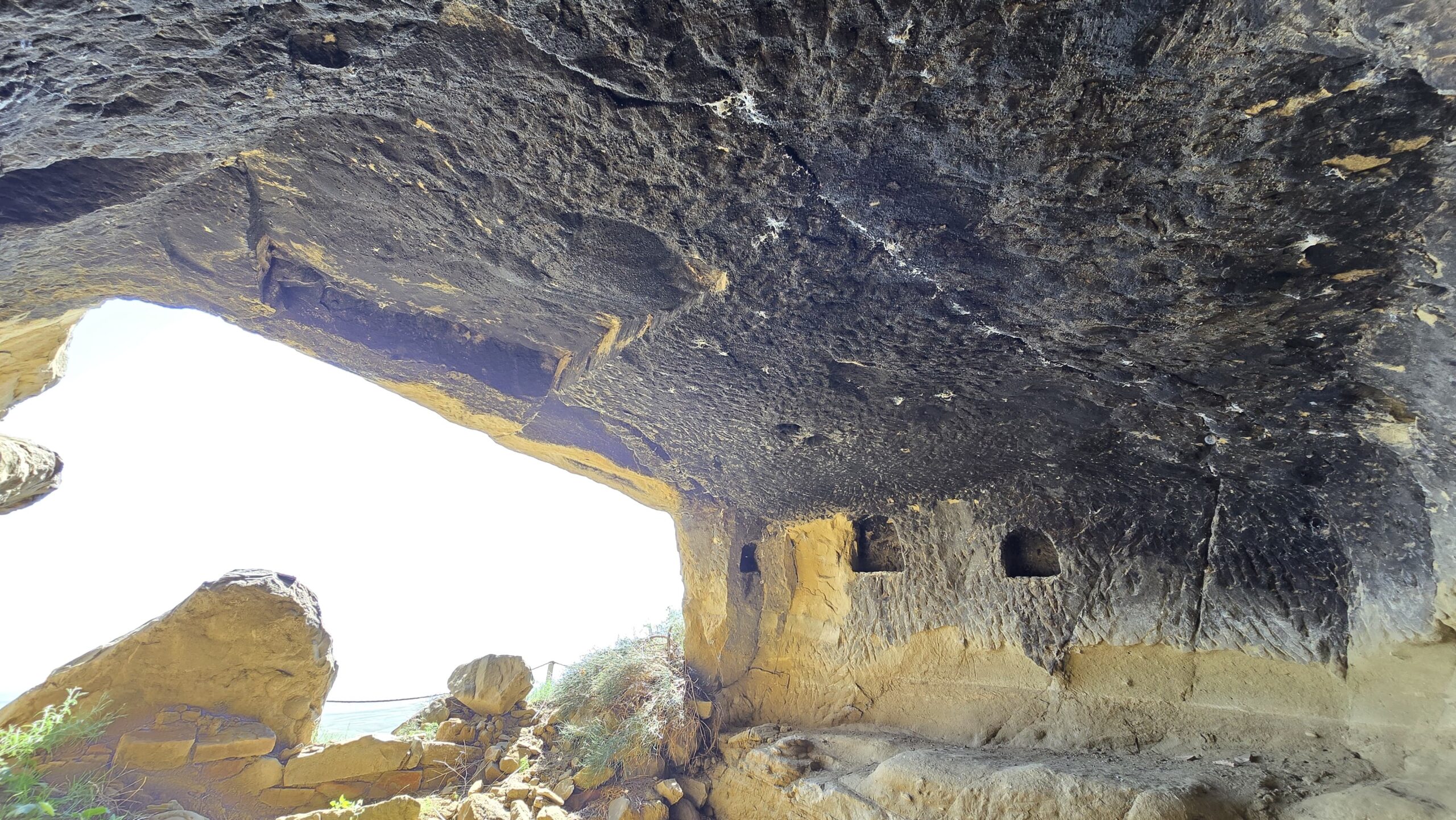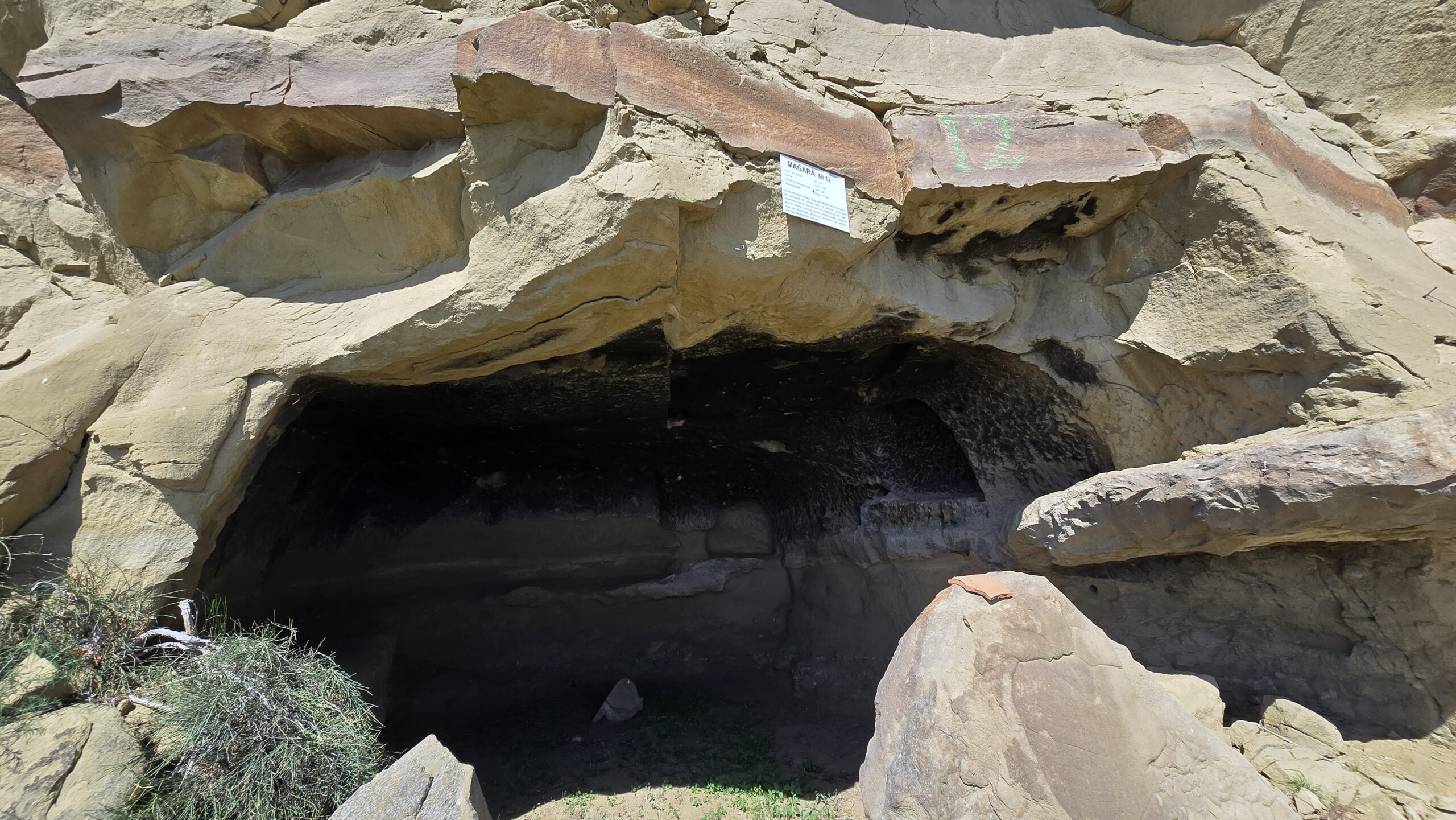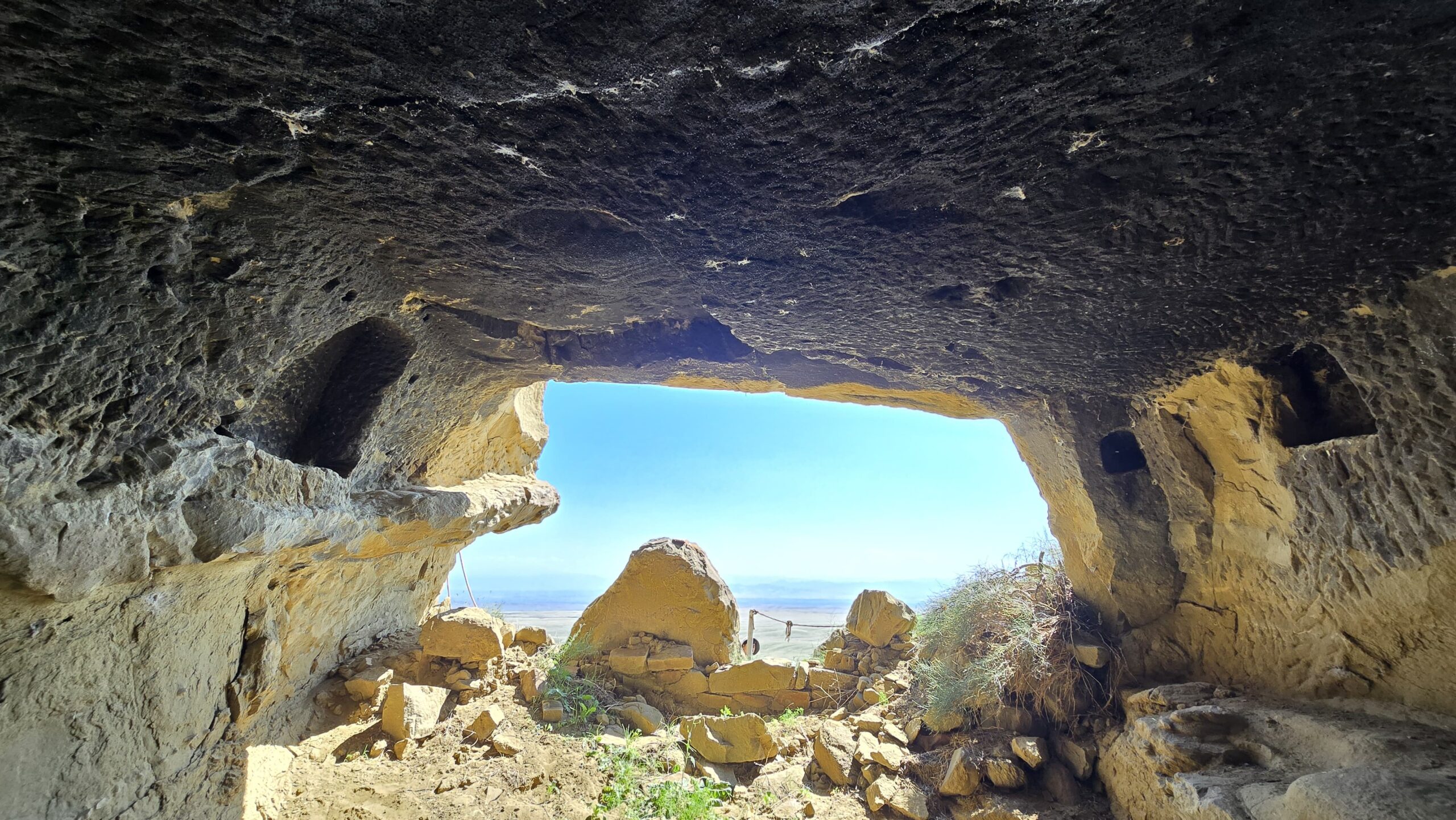CAVE No. 12
Period: Early Middle Ages
Inventory:
Location: Qatardagh Ridge
Keshikchidagh State Historical and Cultural Reserve
Width: 3.55 m
Length: 5.00 m
Height: 1.40 m
Area: 17.75 m²
Traces of early human habitation in the area where the Keshikchidagh cave complex is located date back millennia. This region holds exceptional archaeological and historical significance not only for Azerbaijan but for the entire Caucasus, as one of the oldest human settlements. Archaeological research has revealed that humans lived here for thousands of years, adapting to the natural environment and using the caves as both dwellings and places of worship. The caves situated at various elevations of the Keshikchidagh ridge are both naturally and artificially formed and were utilized in different historical periods to meet the living and religious needs of the people.
Cave No. 12, located within the Keshikchidagh State Historical-Cultural Reserve (SHCR) in the Qatardağ mountain range, stands out as one of the most remarkable and noteworthy examples of this complex. This artificial cave, dating back to the early Middle Ages, was carved into the mountain by human hands. Its rectangular structure was deliberately shaped, providing conditions for long-term habitation. The cave’s dimensions — 5.00 meters in length, 3.55 meters in width, and 1.40 meters in height — yield a total area of 17.75 m², allowing it to be characterized as a small yet functional space for residential or religious purposes.
Cave No. 12, as one of the most interesting examples in the complex, is an artificial structure carved entirely into the rock. Its rectangular layout was not coincidental but rather aimed at ensuring convenience and purposeful use. Ancient people shaped the cave using stone tools, carving its walls to suit daily and domestic needs. Traces of their activity — tool marks, hewn surfaces, and constructed features — remain visible to this day.
The presence of bed niches carved into the cave walls testifies to long-term habitation. These spaces were not merely used for overnight shelter but also for conducting daily activities. The niches and wall recesses are significant archaeological indicators reflecting the lifestyle and needs of the time. It is believed that these niches may have been used to hold lamps, ceramic vessels, or religious objects.
The cave walls were carved into cell-like compartments, which suggests more than just residential usage. Some researchers argue that such cell-like caves could have also served as spaces for religious worship or secluded spiritual life. This underscores that the Keshikchidagh cave complex is not only rich in material culture but also embodies a profound spiritual and cultural heritage. These cell-structured spaces played a significant role in the development of Christian monastic life in later periods, further evidencing Keshikchidagh’s function as an early medieval religious center.



